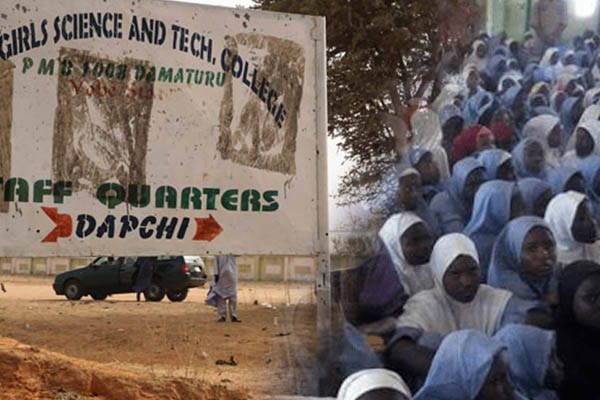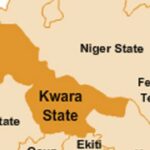
The sleepy town of Dapchi in northern Yobe State is the latest addition to the names of Nigerian towns, villages, city wards, forests and rivers that have became synonymous with tragedy in the last 60 years. Names of these places generally evoke sadness, fear, grief, gnashing of teeth or wiping of tears and they have so lingered in the Nigerian public’s imagination for years, sometimes decades. The abduction of 110 schoolgirls from Dapchi’s Government Girls Science Technical College, apparently carried out by Boko Haram’s Al-Barnawi faction, instantly thrust the town into the ranks of Nigeria’s infamous places, which doubled its natives’ pain and grief.
Before Dapchi there was Chibok, scene of the 2014 abduction of 276 schoolgirls, one of the most traumatic events in the history of Nigeria. Many Nigerian newspapers still have a corner of their front pages devoted to counting the days since the Chibok abduction. With the Dapchi abduction editors are in quandary; should they reserve another corner of the front page for the Dapchi girls? Apart from Chibok and Dapchi, the Boko Haram crisis in the North East has conferred notoriety on more places than any other event in Nigerian history since the Civil War.
There was Gwoza, the historic town once known as the main training centre for Mobile Policemen. From that image of rugged security it became the “capital” of Boko Haram’s “Caliphate.” There was Baga, the rich fishing town on the shores of Lake Chad which became the scene of a very controversial massacre in 2013. It became difficult to know the truth in the welter of claims and counter claims. The mother of all notorious names thrown up by the Boko Haram crisis is Sambisa. Once a very placid forest reserve, Boko Haram insurgents became deeply imbedded in Sambisa and until recently, any mention of it struck terror in Nigerians’ hearts.
Around the same time as Dapchi, there was Birane village in Zurmi Local Government Area of Zamfara State. For many years Zamfara has been the Ground Zero of rural banditry and it even threw up a notorious bandit called Buharin Daji, i.e. Buhari of the Forest. The Birane attack caused a big shock wave in Nigeria; bandits lay in ambush until a truck arrived with a wedding party and local vigilantes. They opened fire, killed all the men and then went into the village and killed some more, a total of 41.
Casualties from Birane were about half those of Benue but the latter attracted ten times more media attention, partly because the state government dramatised it with a state funeral for the victims. The massacres took place at Guma and Logo Local Governments but the two places escaped placement into the halls of infamy because a far more popular villain, “killer herdsman” arose from the tragedy. Four years earlier, another massacre scene in Benue, Agatu, became embedded in the Nigerian psyche after dozens of people were killed and thousands were displaced, also by herdsmen. Across the river in Taraba State where hundreds of ethnic Fulani were killed by Mambilla militiamen on the Mambilla Plateau, “Mambilla” escaped a place in Nigeria’s temple of tragedies probably because it is better known for being a high and temperate plateau, famous for tea, and also as the site of a werewolf dam that government has been promising for 40 years now.
Jos escaped permanent scar for the same reason, that it is too well known for other reasons to be remembered for warfare alone. For several years from December 2008, Jos was the scene of unbelievable inter-communal carnage which spilled over into the countryside. Many people linked the events to the political stance of then governor Jonah Jang; that peace was restored under Jang’s successor Samuel Bako Lalong reinforced the belief that the former administration was the culprit. Inter-communal carnage, a recurring decimal in the Nigerian equation, also dragged other places’ names into the temple of infamy. Modakeke in Osun State readily comes to mind. For two decades from the early 1980s, “Ife-Modakeke” was Nigerian newspapers’ other name for carnage. It was a fight right out of the dark ages; the explanation that Modakekes were settlers, tenants or refugees from the old Oyo Empire hardly justified the carnage.
Acquiring almost equal notoriety was Zangon Kataf, scene of the 1992 carnage that resulted in the loss of hundreds of lives. The politics that ensued stalemated the military government’s efforts to punish the culprits but Zangon Kataf still made it into the temple of Nigerian tragedy. There was also Aguleri-Umuleri, two villages in Anambra State that came to symbolise unbelievable hatred between what other Nigerians see as brothers. Kasuwar Magani in Kaduna State’s Kajuru Local Government, which recently exploded in an orgy of violence, had done so once before in 1980 and is slowly climbing into the temple of infamy.
As Jos escaped permanent image scar, so did Tafawa Balewa, scene of another orgy of violence between two religious communities in 1991. Its image was saved by the name of the old Prime Minister, who was associated with everything good. Other Nigerian towns, which were not lucky to have produced Prime Ministers, became synonymous with tragedy due to the actions of government, as much as their own. In Odi, Bayelsa State and Zaki Biam, Benue State, soldiers and policemen on peace keeping duty were killed by unknown gunmen. Government then permitted the Army to carry out brutal reprisal attacks in order to send a message to other Nigerians not to kill soldiers. To date their two names are synonymous with tragedy.
Yan Awaki quarters in Kano City earned its tragic quality for a different reason. This was the redoubtable headquarters of Alhaji Muhammadu Marwa, alias Maitatsine. Thirty years before Boko Haram, this essentially mad cleric started a movement that caused mayhem in Kano and subsequently at Bulunkutu, Maiduguri; Tudun Wada in Kaduna; Yola, Gombe and Funtua. All the bigger towns escaped permanent scar in their image but Yan Awaki, because it was small, is forever associated with Maitatsine.
Natural disasters also contributed to the scarring of places’ image. Lalupon in Oyo State is still remembered for the 1957 trail derailment that killed many people. Even worse was Langalanga in present day Nasarawa State, scene of the horrific train accident of 1970. Politics added its own bit; Okija Forest in Anambra State is now best associated with a shrine where politicians allegedly swear oaths of allegiance to godfathers. Another forest in Kano State, Falgore, acquired notoriety when bandits infested it. Herdsmen must have laughed heartily when Governor Abdullahi Ganduje recently offered it to them to relocate from Benue. Rijana village in Kaduna State also became notorious as the Ground Zero of highway kidnapping. All motorists accelerate when they approach it. At one point the Deputy Inspector General of Police, Operations shifted his office to a primary school in Rijana.
Equally infamous is Ogunpa River, which overflowed its banks in 1980, swept away dozens of people and hundreds of homes in Ibadan. The national mood was deeply affected when President Shehu Shagari was seen on television wiping away tears at the Ogunpa riverside. And then, not too far away from Shagari’s hometown in Sokoto State, the name of Satiru is etched in infamy because a British military expedition wiped it out in 1906 for rebelling against the British Crown. Actually Satiru should be redeployed to the halls of honour because it was the last heroic attempt by locals, led by a blind cleric, to overthrow British rule in Nigeria before it took firm roots.
Cry not, Dapchi. You were thrust into their sorry ranks due to no fault of yours.

 Join Daily Trust WhatsApp Community For Quick Access To News and Happenings Around You.
Join Daily Trust WhatsApp Community For Quick Access To News and Happenings Around You.


